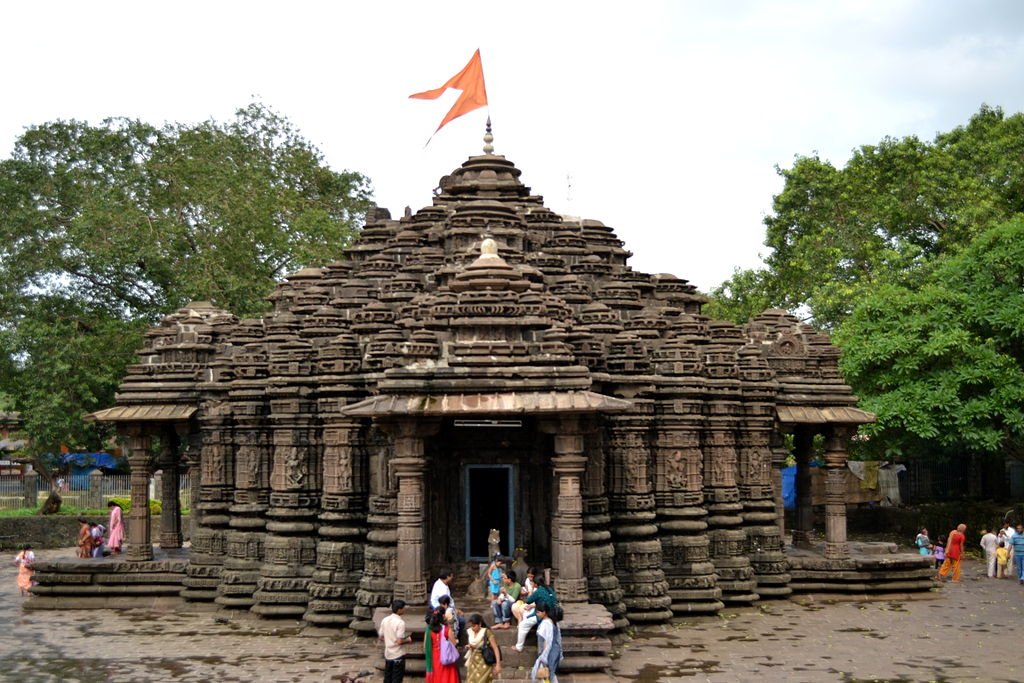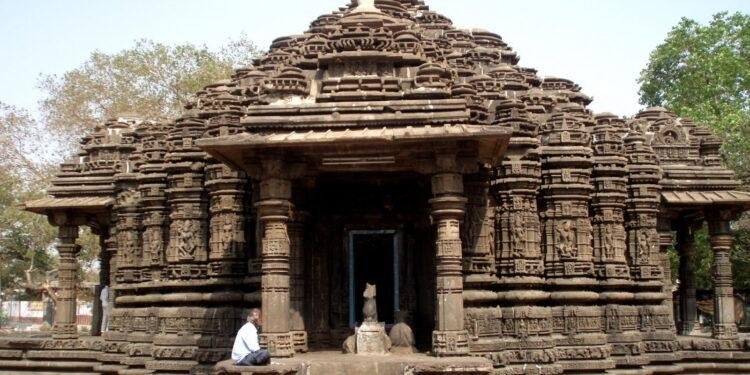The Shiv Mandir of Ambarnath is also called the Ambreshwar Shiva Temple. It is said that Shilahara king Chhittaraja constructed it, his son Mummuni rebuilt it. The temple is on the bank of Vadavan river. The temple is Hemadpanthi-style, beautifully carved on stones.
Shrine’s History
It is also believed by some people that the temple was built by the five Pandava brothers in just one night in a huge single mass of stone. However, official records are not supportive to this. This temple has 20 steps to go down in the main room called Gabhara, and there is one shivling at the center of the room. On the occasion of Mahashivaratri, there is a big fair in Ambarnath to get blessings from Lord Shiva. The Mahashivaratri Fair continues for 3?4 days. It starts two days prior to Mahashivaratri and continues for a day after Mahashivaratri. This temple is overcrowded in Mahashivaratri. On the day of Mahashivaratri, Ambarnath’s Eastern side is blocked for vehicles and route is diverted for vehicles due to heavy traffic of pilgrims. The Temple becomes overcrowded again in the month of Shraavana to get blessings from Lord Shiva. Pooja, like Rudra Abhishek, can be performed on the temple premises.

Architectural Relevance of This Shrine
This temple is a fine example of the Vesara style that was predominant in the central parts of India. Vesara style is essentially a tasteful blend of two schools of architecture, the Dravidian style and the Nagara style, in simple words, a mix of the north Indian and south Indian styles of temple making. There were many regional versions of Vesara styles. The one in Ambernath is in the Hemadpanti style. Hemadpanti was a legendary prime minister during the regime of Devagiri kings. He was a great patron of temple architecture and the style evolved under his patronage is named after him. The features are bold.
For example the heavily decorated outside wall and the stepped pyramid that forms the tower. The whole temple is executed in coarse brownish stone that is typical of this region. The plan of the temple is corrugated or fluted along its edges. The idea is to have a larger wall surface to accommodate a plethora of sculptures and other decorations that are the these of this style. Had it been a straight outer wall only less that half of the sculptures could be accommodated on along the outer surface of the wall. The sculptures of Hindu mythology, predominantly Shaiva theme , forms a chain around the temple met the eye level. There are fluted mouldings above and below the sculptures.
A large number of the sculptures has lost its details to the weathering. Unlike the soapstone used by the Hoysalas or the hard marble , the type of rock used in Ambernath temple is flaky. The weather took its toll. The details got blended thanks to the flaking over the centuries. The portions relatively isolated from the natural elements were better preserved. Still, as a whole the sculptures are intact. The tower is in the classic Nagara style. The tower over the vestibule and the central hall is intact, but the pinnacle over the sanctorum is partially collapsed.
One can find the image of dancing Shiva on the tower. The motif on a block standing skyward is beautifully carved. There are three porches that give access to the central hall of the temple through a vestibule. The priests sit in this portion of the temple. This portion is intricately carved. The roof is supported by an array of pillars , which itself is a piece of art. Never forget to look up at the ceiling with all the details carved in stone. A Nandi image is located at the center of the main porch, which is in the west. To reach the inner sanctrom, one has to climb down from the main hall. The linga is located in this underground sanctorum which is open to the sky. Devotees offer prayer sitting close to the linga, which is installed at the center of this open sanctorum.
Shrine’s Map Location and How to Go There
By Road
The nearest bus stop is Ambernath.
By Rail
The nearest Ambernath Railway Station.
By Air
The Nearest airport is Mumbai airport.
Shrine Timings
10:00 to 18:00 All days of the week
Events Celebrated at This Shrine
Shivratri













































